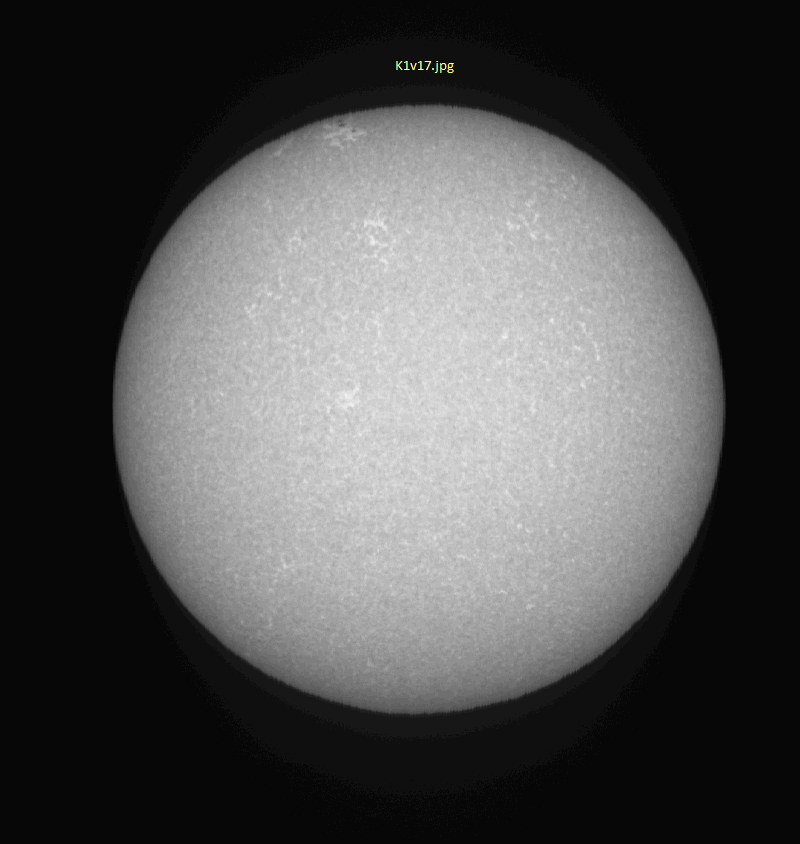-
Posts
13,036 -
Joined
-
Last visited
Content Type
Profiles
Forums
Gallery
Events
Blogs
Posts posted by Merlin66
-
-
The active areas, showing very well formed sunspots, AR2936/38/39 and 2940 make a very nice layout.
There's another large unnamed AR just coming into view in the north east - multiple spots...
I used both the MiniSHG (see the proms) and the DIY Cak Filter on the Custom Vixen 90 (for the detail)
Enjoy!-
 13
13
-
-
The Baader K Line filter is about 80A bandwidth - too wide to resolve the Ca II K line detail. Just enhances the white light details.
The Lunt 40mm Ha is a good starter scope...https://luntsolarsystems.com/product/lunt-40mm-dedicated-hydrogen-alpha-solar-telescope/
The $$$$ Lunt CaK filter is a 2.2A bandwidth and even that is a compromise. https://luntsolarsystems.com/product/lunt-calcium-k-modules/
I image in all wavelengths using a MiniSHG which gives a resolution around 0.18A !!!
-
If you use a Baader solar screen filter, or a Herschel wedge (with mandatory ND3 filter) adding secondary filters - like nighttime Ha, OIII or the Baader K line filter just improves (sometimes) the White Light contrast of the sunspots, faculae and granulation.
You won't see any H alpha filaments, plage or prominences. That needs a specialised , expensive extreme narrowband etalon filter $$$$$$$$$
-
 1
1
-
-
-
You ALWAYS need a filter to safely observe/ image the Sun. (Unless you really want to cook your expensive camera and possibly damage the internals of your telescope.)
Fit a Baader Solar screen filter as a minimum.
-
Yes, those are all CaK proms, images from stacks of 200 from 500 slightly sharpened.
Exposures were typically 40-60ms, giving a total exposure of 10sec.
(For comparison the previous CaK proms I posted from the MiniSHG took only 0.004 sec exposure - the benefit of a very narrowband centred on the activity.)
- the benefit of a very narrowband centred on the activity.)
-
 1
1
-
-
Using the Vixen 90/1000 with the DIY CaK filter (1A bandwidth). Some issues with the internal tilt need to be addressed.
The southern zone dominated by the large sunspot AR 2934.
The northern zone has a new AR just coming into view -complex with at least two larger spots. The mid zone shows the small group AR 2935?
Some very nice proms around!!!
Enjoy.





-
 8
8
-
-
Steve,
Looks like you had a good session.
Following up again on the CaK proms...same setup/ exposures as previous?
Ken
-
 1
1
-
-
Steve,
Good selection of images, well presented.
I assume the CaK proms were a result of using the same settings as you advised earlier?
Ken
-
Well done!
Keep them coming.
-
 1
1
-
-
Nigella,
I’ll drop you a PM.
I’m trying to gather together all the data I can on imaging CaK proms, I hope you can contribute.
-
 2
2
-
-
-
Sounds very much like the Baader K-line version (8nm).
Should work well with a Herschel wedge or the recommended ND3.8 film.
-
 1
1
-
-
I and many other amateurs grew up with Nortons Star Atlas.
The Atlas has been upgraded and improved and the handbook section is second to none.
All you need to know between two covers!
-
 2
2
-
-
-
The ones I used were 8.5 x 8.5 x 14mm momentary DPDT 6pin DIP. Pin distance 5mm, #J31- 05-05 51771
https://www.ebay.com.au/itm/174729305484
or
https://www.ebay.com.au/itm/233766040071
Cut the excess length of the feet and use a de-solder braid .....
-
 1
1
-
-
No, the push buttons are much more basic in the SW controller.
I’ll post a couple of images and details ASAP.
-
Bad news I'm afraid.....
I have and use six of these SW focus motors on my Solar scopes and found exactly the same problem on five of the controllers. The push buttons SW used are rubbish and are prone to failure.
I ended up buying a minimum order quantity of a replacement switch and un-soldered the four switches in each controller replaced them with the new switch.
That was early last year, and so far I've not had any further failures.
If needed I can check my files and supply details of the replacement I used.
Ken
-
 1
1
-
-
Still working with filters - trying to find the Holy Grail to suppress the parasitic light.
Some interesting filaments visible with a couple of proms. Both in CaK and CaH.



I did an "inverted" CaK to better show the fluffy "flocculation clouds" visible in CaK.
I misread G E Hale's earlier description from 1929 when he said "....that a distinctive term should be adopted, and I now propose the name flocculi for the regions on the Sun's disk which are shown only on photographs made with the spectroheliography" and believed that these "clouds" were the flocculation he was talking about. He was actually referring to the brighter lines between these formations.....

Enjoy!-
 7
7
-
-
-
No, not my images, they came from CN.
The guy I believe was doing a rebuild to improve the mirror sled and focuser system.
-
 1
1
-
-
-
I've de-forked many Meades - 8", 10" and 12"
I found the 12" OTA at 17Kg too heavy for my NEQ6 mount.
I sold the 12" Meade and bought a 11" Celestron - works well for me.
-




































"Sparkling diamonds" CaK 6th Feb 2022
in Imaging - Solar
Posted
The solar disk is still dominated by the central active areas, AR2939 and AR2940. Over in the north west the last remnants of AR 2938/36 are disappearing and the latest AR2941 is coming into view in the north east.
There's a small un-named AR down in the south west; a neat couple of small spots surrounded by plage. The bright points in the immediate area were sparkling like diamonds in sunshine.